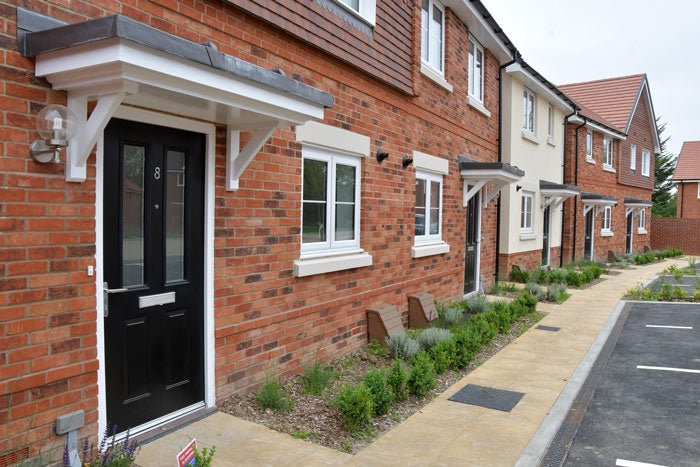
Do as I say
By Kate Rees, Housing service manager
26 April 2019
First published by the Housing Management Network
Back in the day, I think it was probably fair to say that the landlord-tenant relationship ran along paternalistic, perhaps even dictatorial lines – a case of ‘If I say jump, you ask how high?’
But now, and for some time, really, I would hope this has not been the case, as we aim for a more realistic and mature partnership with our residents. And with the recently launched NHF ‘Together with Tenants’ campaign, I wonder where our relationship has the potential to go from here onward?
Adult-to-adult conversations can sometimes seem the hardest thing to begin, but as any housing officer knows – when people feel powerless, they lash out. They might show this through anger, tears or just pure and simple disengagement and this makes situations that could or should be relatively easy to resolve, far more difficult to overcome.
This is where restorative practice comes in – a technique designed to prevent conflict, build relationships and repair harm by enabling people to communicate effectively and positively. restorative practice is about giving back – restoring – power and ownership, as well as helping communities and people communicate better and resolve issues in a practical way.
The restorative way of working combines both high control and high support and is characterised by doing things with people, rather than to them or for them – or not doing anything at all. You have to create a ‘restorative environment’ where you challenge people to figure out what is needed and then act for themselves.
For example, imagine an untidy garden, over-run with fly-tipped junk and bedraggled weeds. What are the options available to you, when you note the issue?
- You could NOT do anything and hope it sorts itself out
The likelihood is that this will lead to resentment from neighbours, a further deterioration in property condition and a neighbourhood dispute
- You could send a letter TO the resident telling them they are breaching their tenancy agreement
This is likely to intimidate or antagonise and reduce the likelihood of a long-term solution…and it would be really expensive to pursue possession.
- You could arrange FOR the garden to be cut and cleared
But this will more than likely create unrealistic expectations and you’ll wind up in same situation in a couple of months later.
Or:
- You could discuss the situation WITH the resident
In this way, you can iron out problems, clarify expectations, agree responsibilities and will be far more likely to achieve a lasting solution.
The idea is that spending more time focusing on solutions – rather than re-hashing the issue – moves the issue forward.
The language used in these situations is also extremely important. With restorative practice, the first thing to remember is that ‘the words you say will lead to the experience you receive’. This can work in all sorts of situations, and again, it’s worth remembering that, just like children, we can all find ourselves getting angry or upset in situations that we perceive to be beyond our control.
It’s important to separate behaviour from the person, so instead of saying: ‘Your garden is a mess!’ you might say ‘When you leave lots of rubbish in your garden, it makes the estate look untidy and the neighbours and I feel let down’.
By doing this you immediately de-escalate a situation by moving from blame to discussing the impact of behaviour, and can hopefully then proceed to finding a solution together.
Evidence collected from housing providers indicates that 97% of anti-social behaviour cases are resolved without any legal action being taken. Restorative practice has the potential to be used in a high proportion of these cases and may be the only viable option to resolve the situation.
Questions to ask for restorative practice to work
- What happened?
- Who’s been affected?
- What do you think needs to happen to make things right?
Using restorative practice in neighbour disputes not only stops the conflict, but can repair relationships. It does this by:
- Empowering neighbours to take control of their own conflict and find appropriate solutions
- Giving neighbours the opportunity to talk openly in a calm environment
- Giving the harmed neighbour an opportunity to explain how they have been affected and what needs to happens to make things better.
This approach can also succeed in the workplace. Indeed, I have previously set up ‘peer problem solving circles’, where housing officers bring along a complex or ‘stuck’ tenancy management case and we use the solution-focused technique to explore the problems and share knowledge and experience. Possible solutions are offered by other group members and the case holder identifies actions to take forward.
This works largely because, when we are part of teams where we feel safe, heard and understood, we are capable of producing our best work.
I have even used it in partnership with residents and the police to negotiate Acceptable Behaviour Agreements.
For me, the beauty of working in a restorative way is that it builds residents’ ability to resolve difficult situations themselves, which in turn leads to more sustainable communities. This releases housing officers to concentrate resources where they are most needed and places the power to create meaningful change firmly where it belongs.
